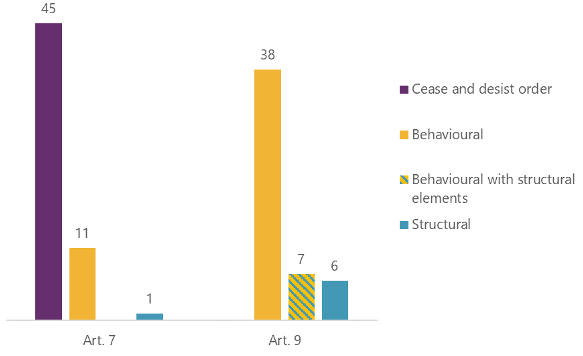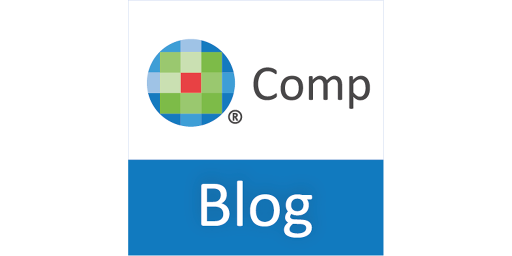How effective have EU antitrust remedies been under Regulation 1/2003?
Time present and time passed
Are perhaps both present in time future
And the future is contained in the past.
From T. S. Eliot’s Four Quartets
This development raises a crucial question: how effective have antitrust remedies been? This development engenders a crucial question: how effective have antitrust remedies actually been?
In a study
that we recently coauthored for DG COMP, as part of a multi-disciplinary consortium led by law firm Grimaldi Alliance
and economic consulting firm NERA
Retrospective evaluation is key for the effective enforcement of competition law (see in this sense also the Draghi Report
‘s proposal 8 for revamping competition; see also the volume on the EU experience edited by Ilzkovitz and Dierx, 2020
). While the practice of EU merger remedy has been systematically assessed before (starting in 2005 with the Commission’s study on merger remedies
, (abuse a dominant position), “any behavioural or structure remedies which are proportionate and necessary to end the infringement”. Alternatively, Art. In celebration of its twentieth anniversary, Regulation 1/2003 recently underwent a health check. Our study also provides recommendations on how the Commission’s practice and policy of antitrust remedies could be improved in a possible update to the legal framework. On the occasion of its twentieth anniversary, Regulation 1/2003 recently underwent a health check, and our study also provides recommendations on how the Commission’s practice and policy of antitrust remedies could be improved under a possible update of the legal framework.
by the Supreme Court in United States v Grinnell Corporation). The effectiveness of a remedial measure is directly related to its implementation when the remedy’s objective is limited to stopping an infringing behavior. When the goal of a remedy is more than that, design flaws can hinder effectiveness. Broader measures of effectiveness include the impact that the remedies had on the markets concerned by the infringement, and the influence that the decisions containing them had on subsequent guidance, jurisprudence, and sector regulation.
Drawing from, primarily, the Commission’s COMP Case Search
website, we constructed a novel, comprehensive and detailed dataset of all non-cartel antitrust decisions taken by the Commission between 24 January 2003 and 31 December 2022. We counted 108 decisions in total, divided between 57 Art. We counted 108 decisions in total, split between 57 Art. 9 decisions. Since Regulation 1/2003 only started to apply on 1 May 2004, this includes a handful of decisions still taken under the preceding Regulation 17/1962, among which is the well-known Microsoft I
decision.
Based on a textual analysis of the decision, we first categorised the competition concern in each decision, distinguishing between horizontal agreements, vertical agreements, single-firm exclusionary behaviour, single-firm exploitative behaviour, and concerns related to the single market. We then classified the remedy, separating it into behavioural remedies, such as the obligation to change contract clauses, structural remedies, such as the divestiture or assets, and behavioural treatments with structural elements, such as the transfer of slots at airports. We found that about 80% of Art. Slovak Telekom
Decision No. 3. Only one of the remaining twelve Art. 7 decisions was a structural remedy imposed, namely in the ARA foreclosure
decision, which followed the cooperation procedure.
Findings based on the case studies
From this universe of cases, we select respectively five Art. 9 cases to evaluate the effectiveness of the remedy ex post. After excluding simple cease and desist orders as well as decisions that were under judicial review when the cases were selected (Google Search (Shopping),[…] Google Android
) as well as decisions that had been annulled or partially annulled (CISAC agreement
) we found it easy to select the five important cases from the remaining seven Article 7 cases. To select the seven most significant of the 49 Art. After excluding Upstream Gas Supplies in Central and Eastern Europe
, (annulled the Court of Justice), 9 cases remained. We ranked them based on a numerical index combining factors such as the length of decision and the number of downloaded decisions from the Commission’s COMP Case Search Website. We then selected those cases that were the highest-ranking, while taking care to cover time, legal basis and type of competition concern. Broadcom
was the only Art. 8 (interim measures) case decided to date under Regulation 1/2003, and where the remedy obligations are still ongoing, was the only case on which we could not reach a firm conclusion.
Encouraged by the rigorous case selection and the good coverage of the sample of selected cases (in addition to most of the Art. The rigorous case selection and the good coverage of the sample of selected cases (apart from most Art. In our study, we also tried to overcome the idiosyncratic character of antitrust cases in order to find more general patterns. While three quarters were fully implemented, only half of the remedies retrospectively evaluated were fully effective. This suggests that the design of the remedy was not always well-suited to its objective. The remedies that were imposed by an Art. The implementation of remedies imposed by an Art. 9 decision. The Commission’s remedy practice appears to have improved over time, since issues of implementation and effectiveness are concentrated in the earlier cases. The remedy practice of Commission appears to be improving over time as issues of implementation and efficacy are concentrated in earlier cases. The study found that while many lessons were learned from our research, a number of them point to the imperfect functioning of Art. This imperfection is due to a number of reasons. This imperfection has multiple causes, including: the hybrid nature (which simultaneously establishes the infringement and imposes the remedies); the lack of a market testing requirement; the statutory subordination to behavioural remedies and the legal restrictions on the appointment of an monitoring trustee following the Microsoft I judgement. In order to overcome these limitations, our study recommends, regardless of remedy type, that the choice of remedy be left up to the application of principles of effectiveness and proportionality (in accordance with Art. The ECN+ Directive, Article 10, provides for the application of the principles of effectiveness and proportionality in each case. The Study suggests that in cases of high complexity, the infringement and remedy decisions could be separated to allow for more effort on remedy design, and increase transparency. Lastly, remedy design is governed by Art. The market testing required by Art. The remedies provided under Art. 9, as well as from the appointment of independent advisors.




